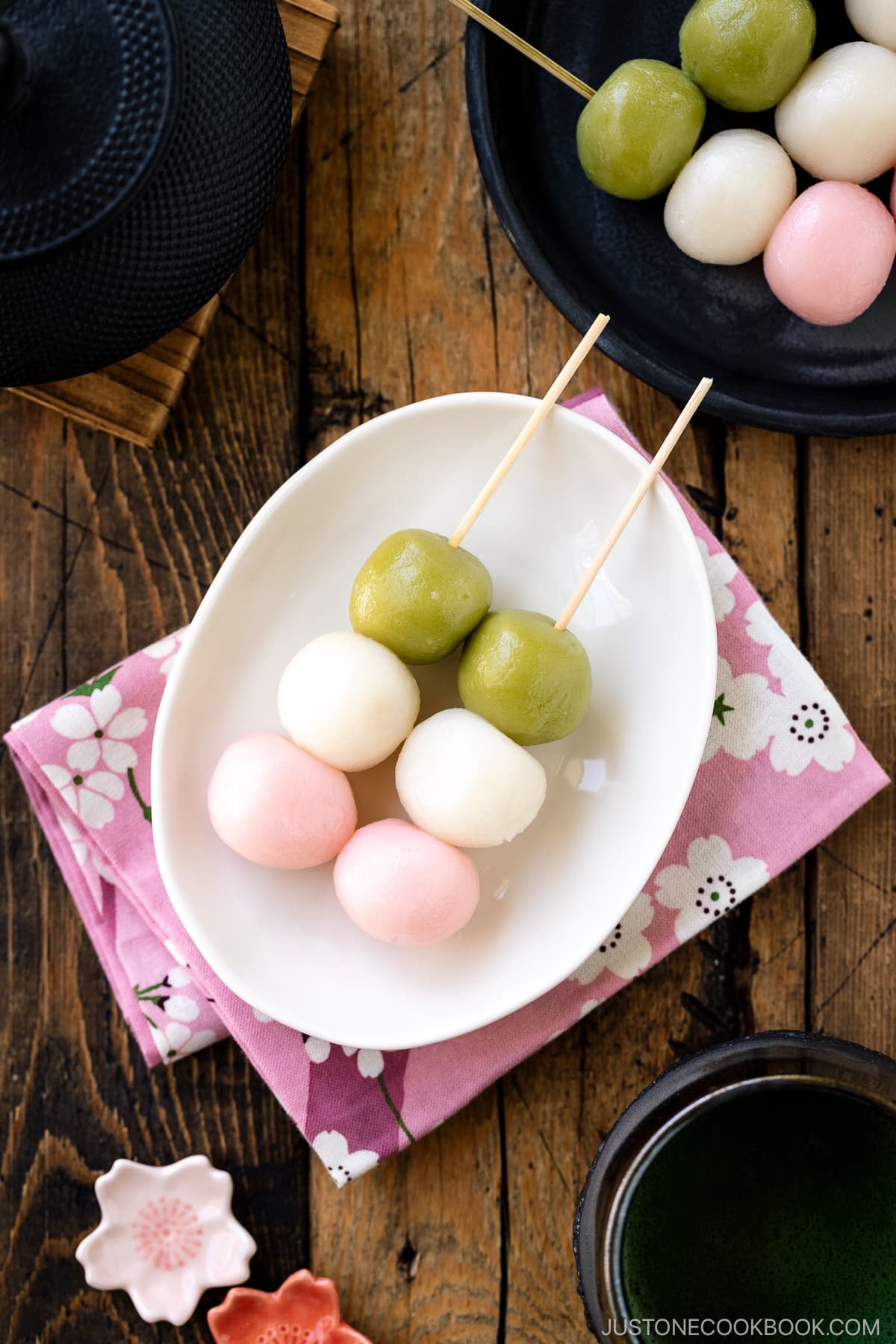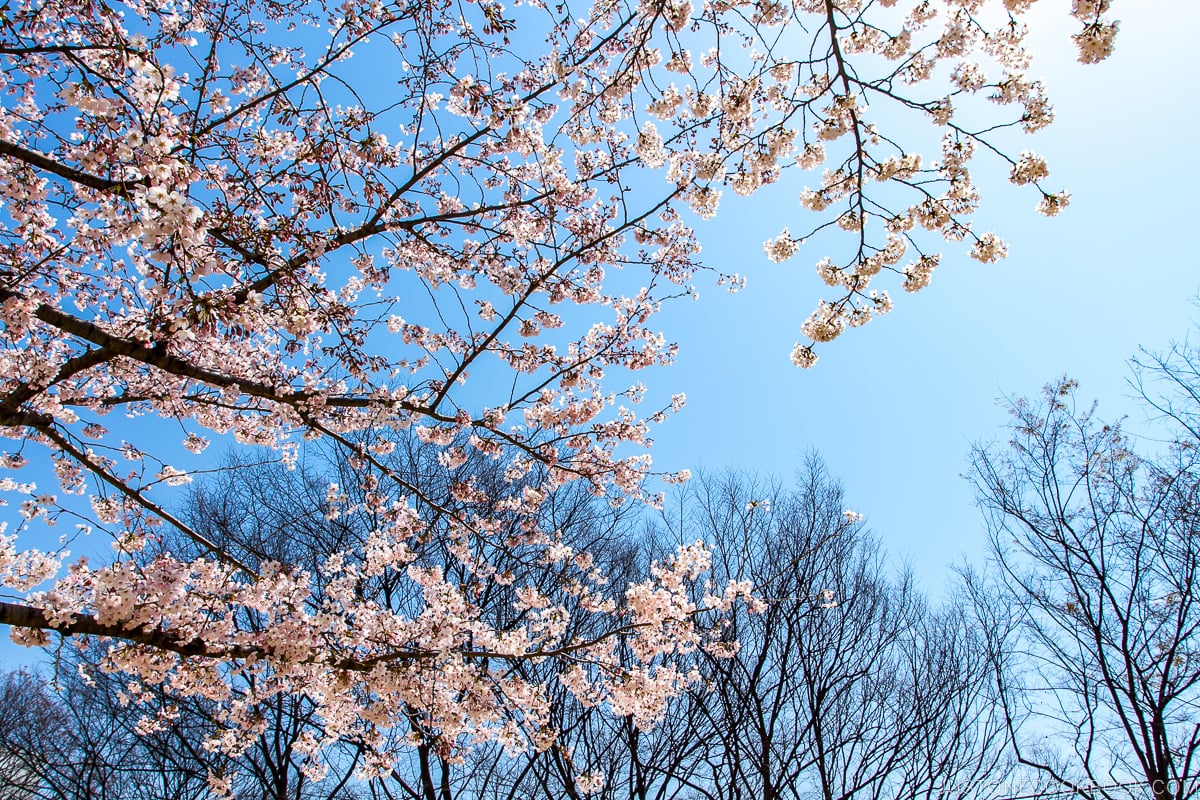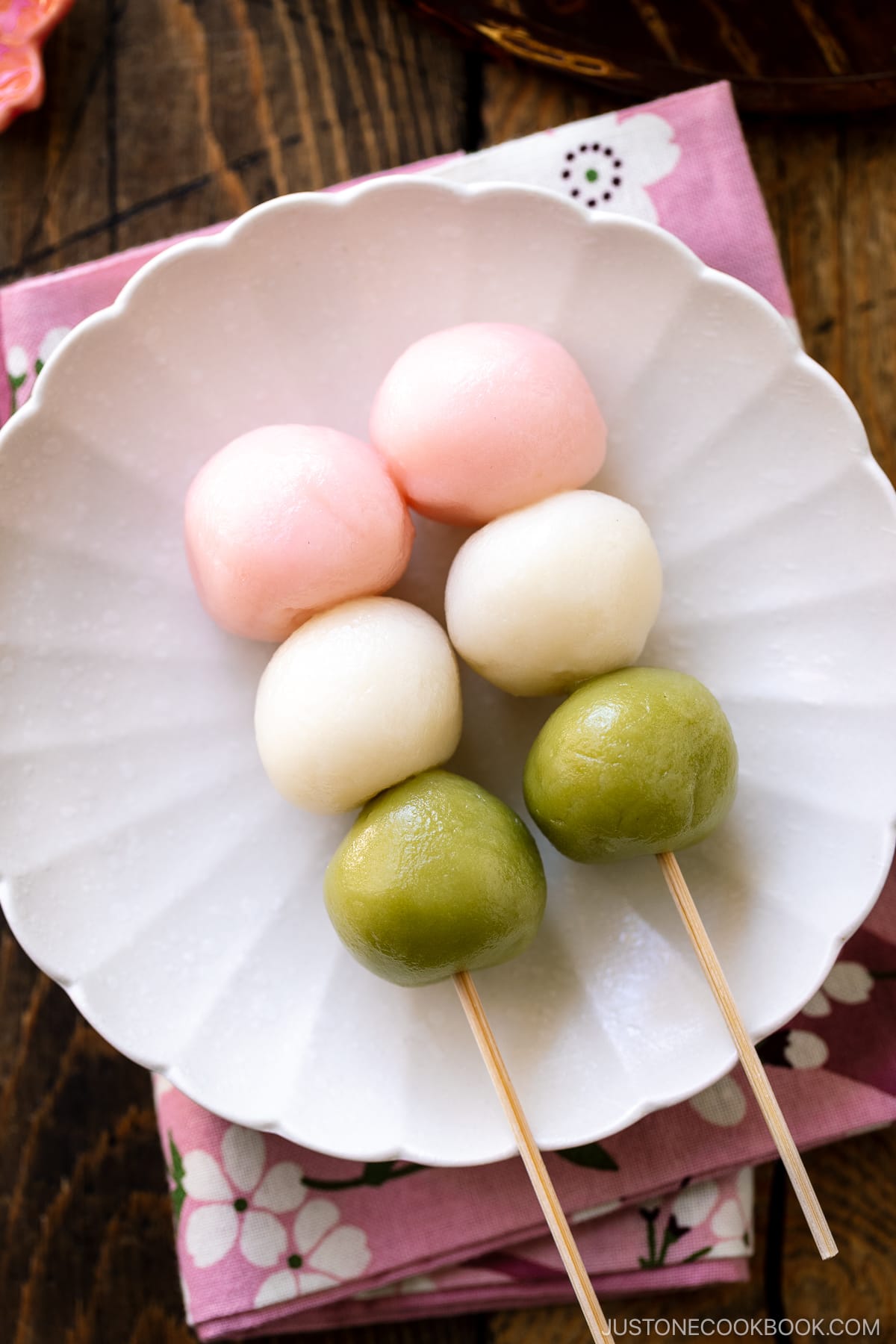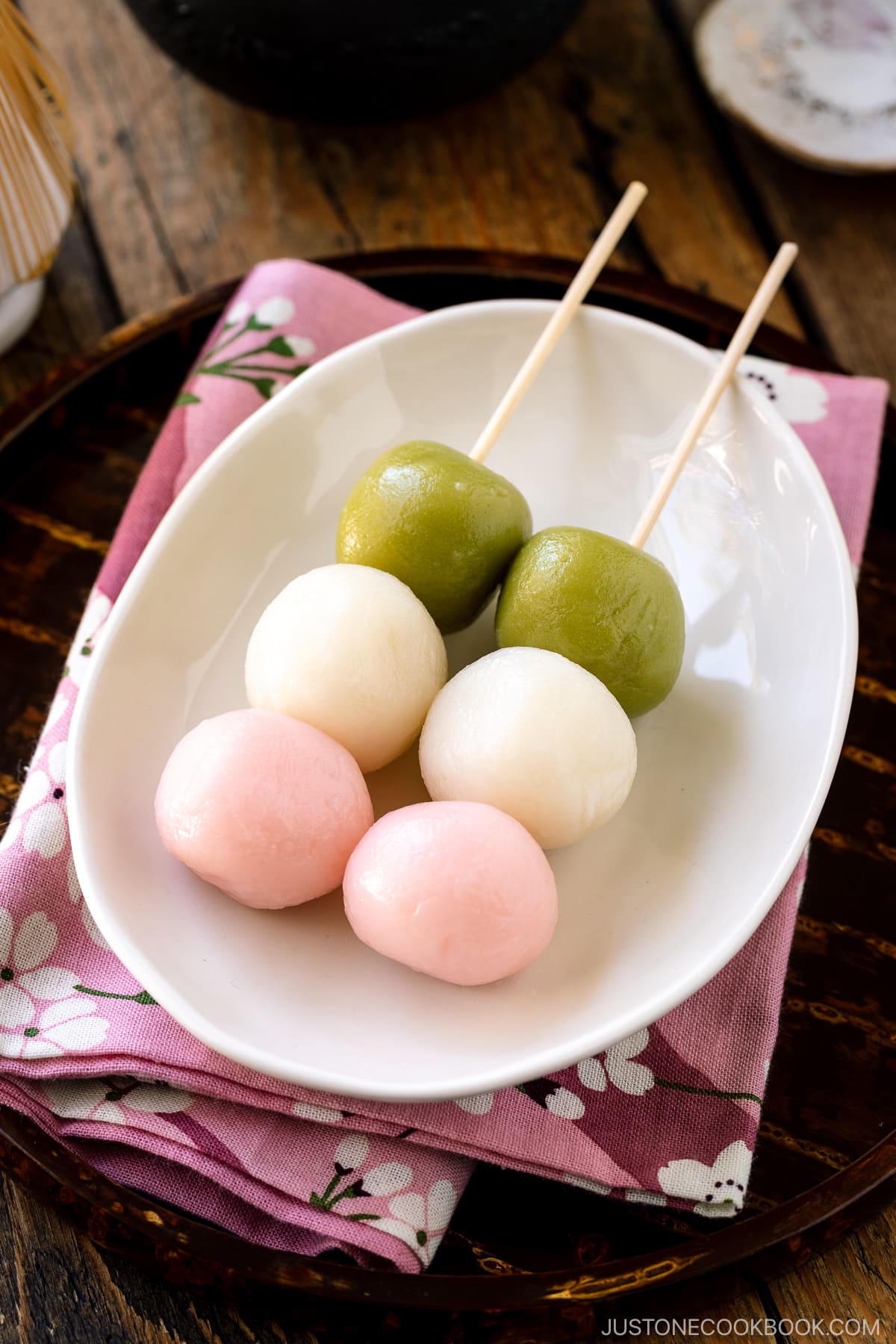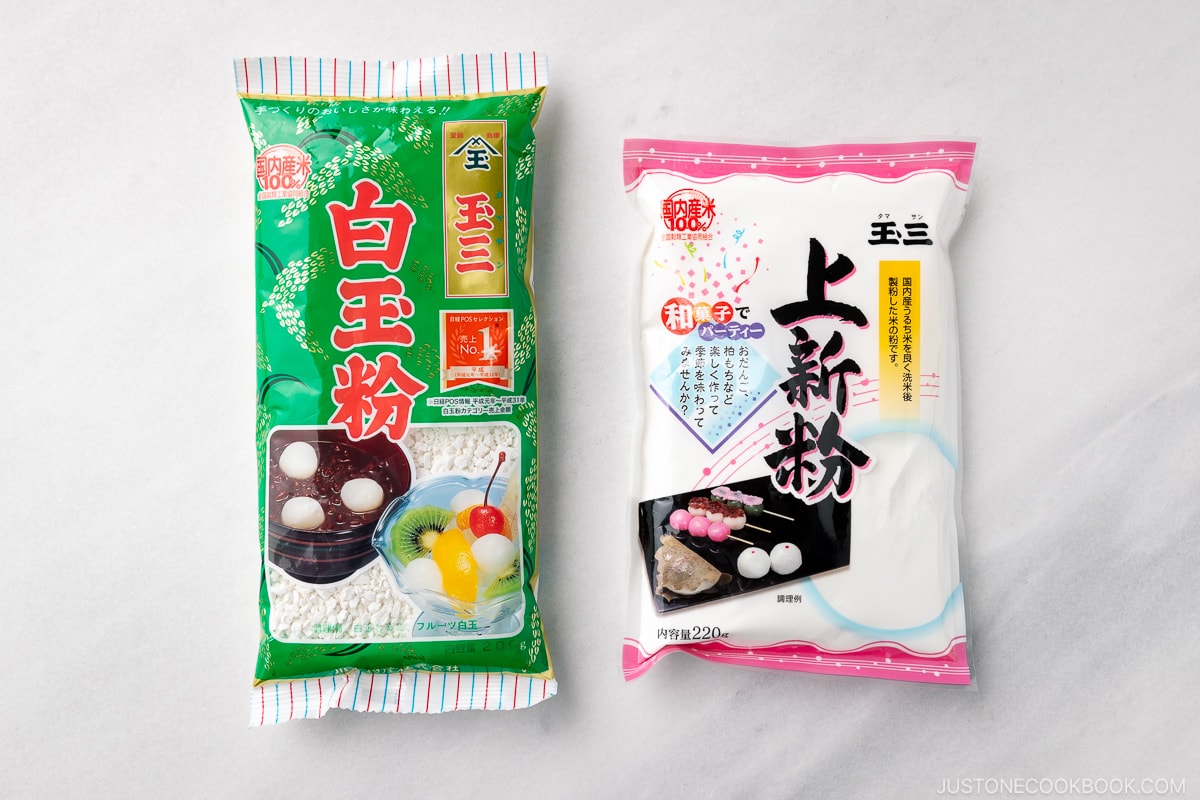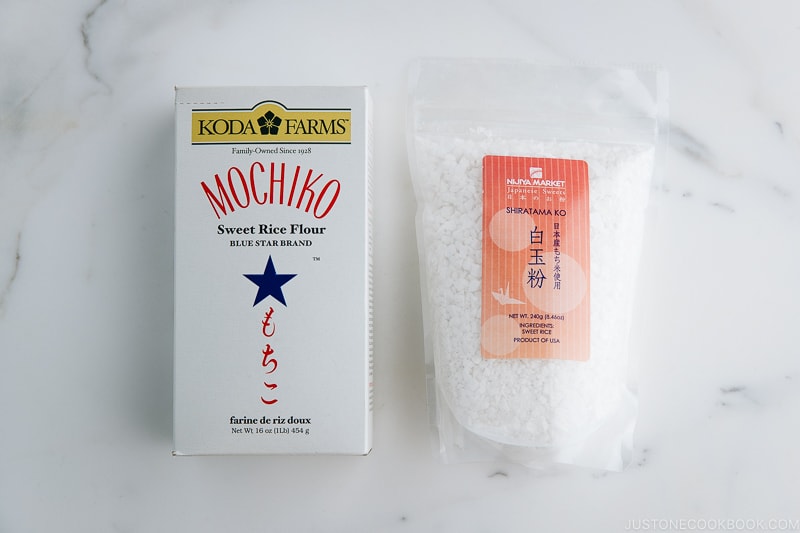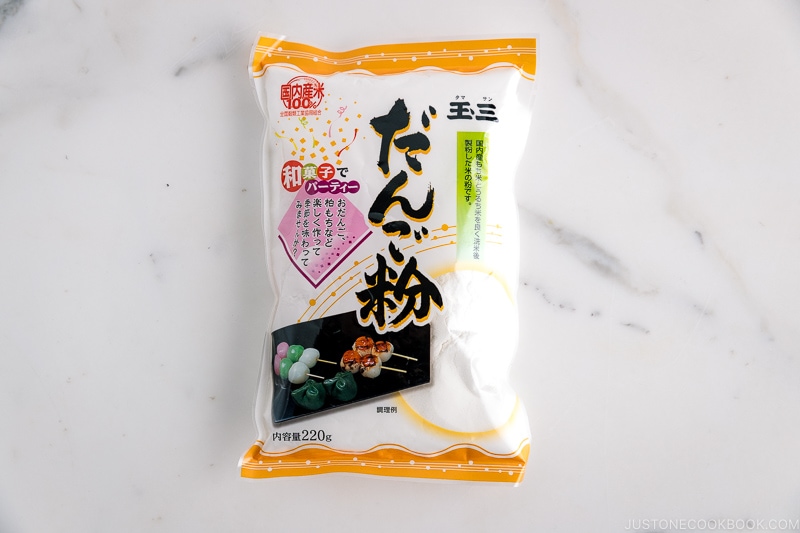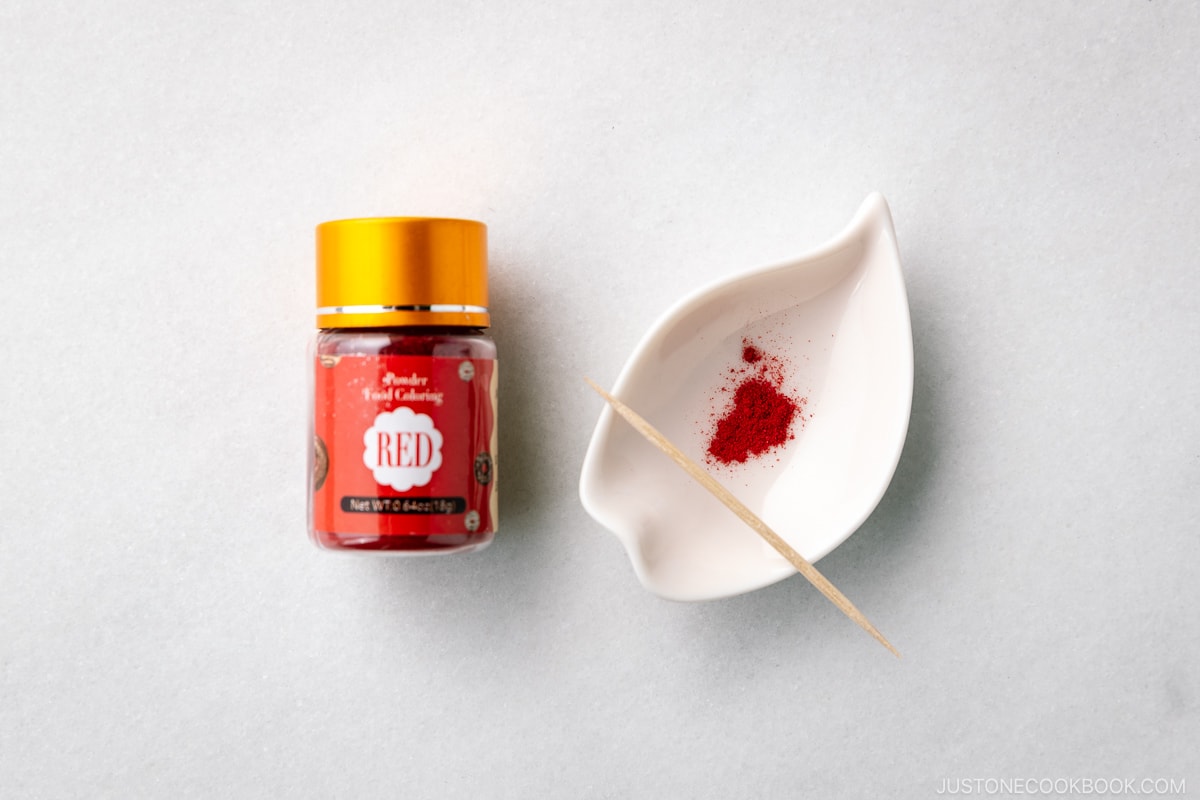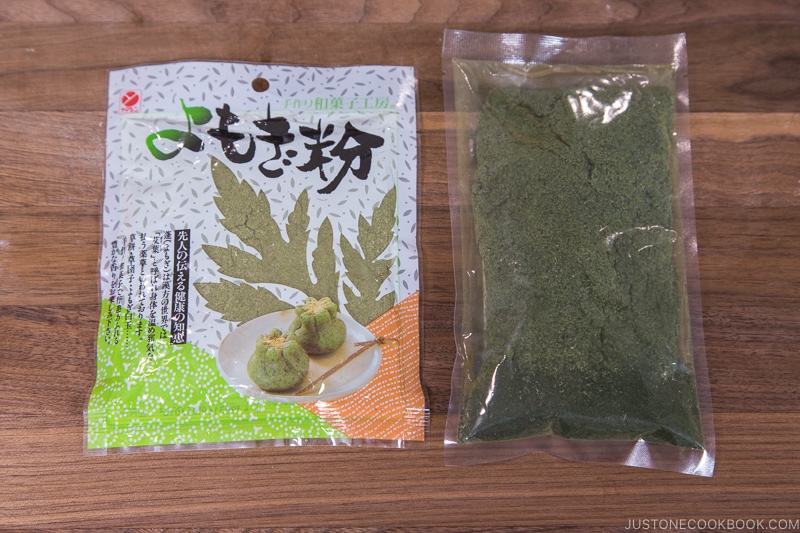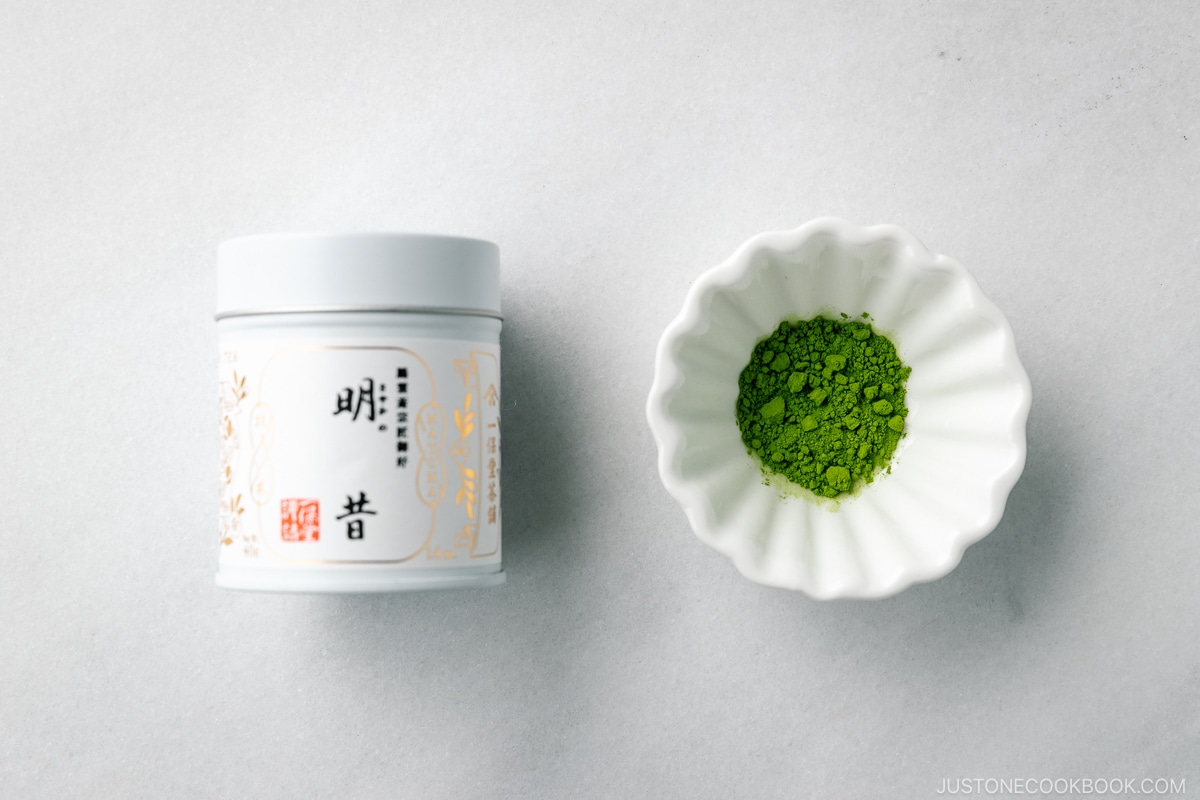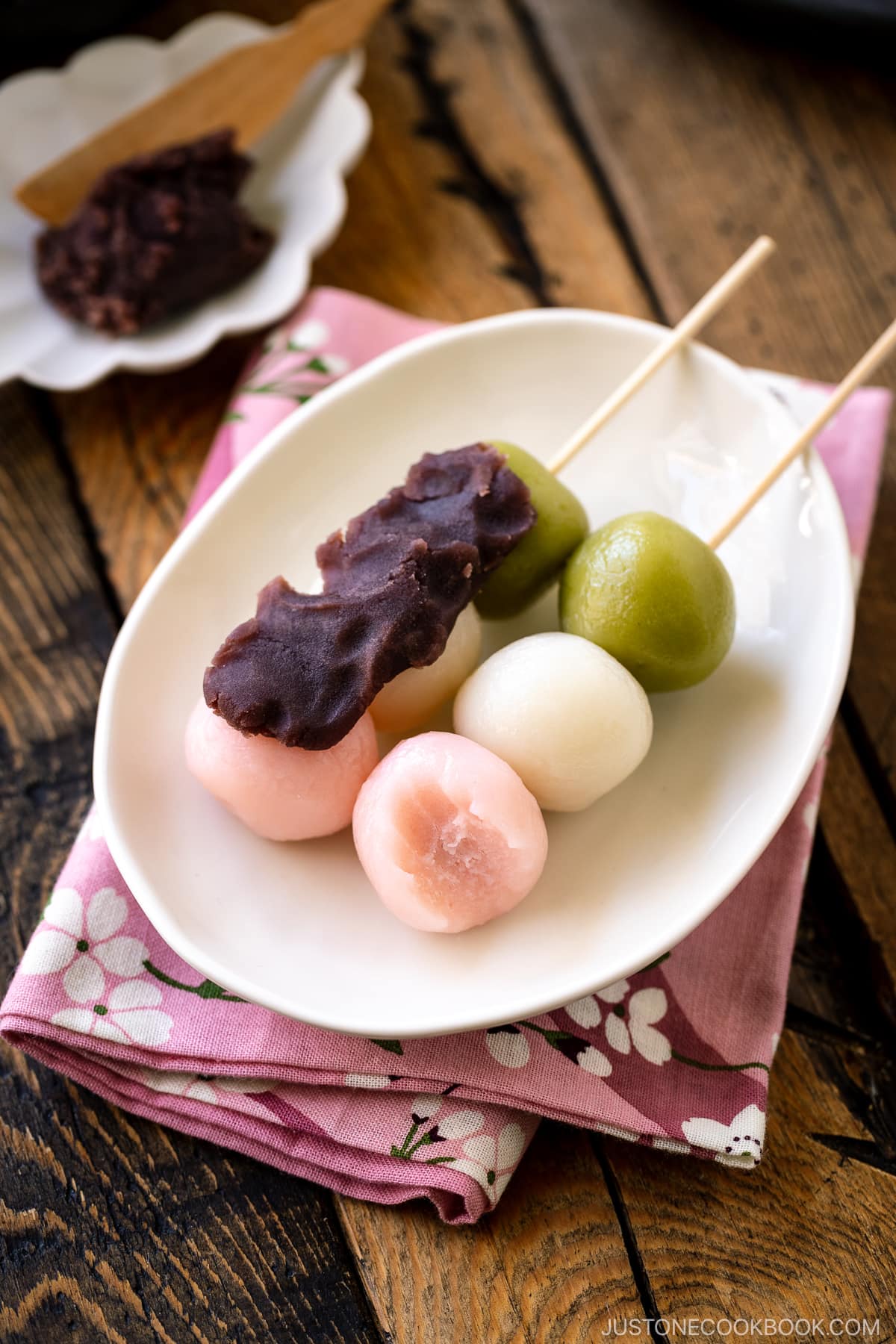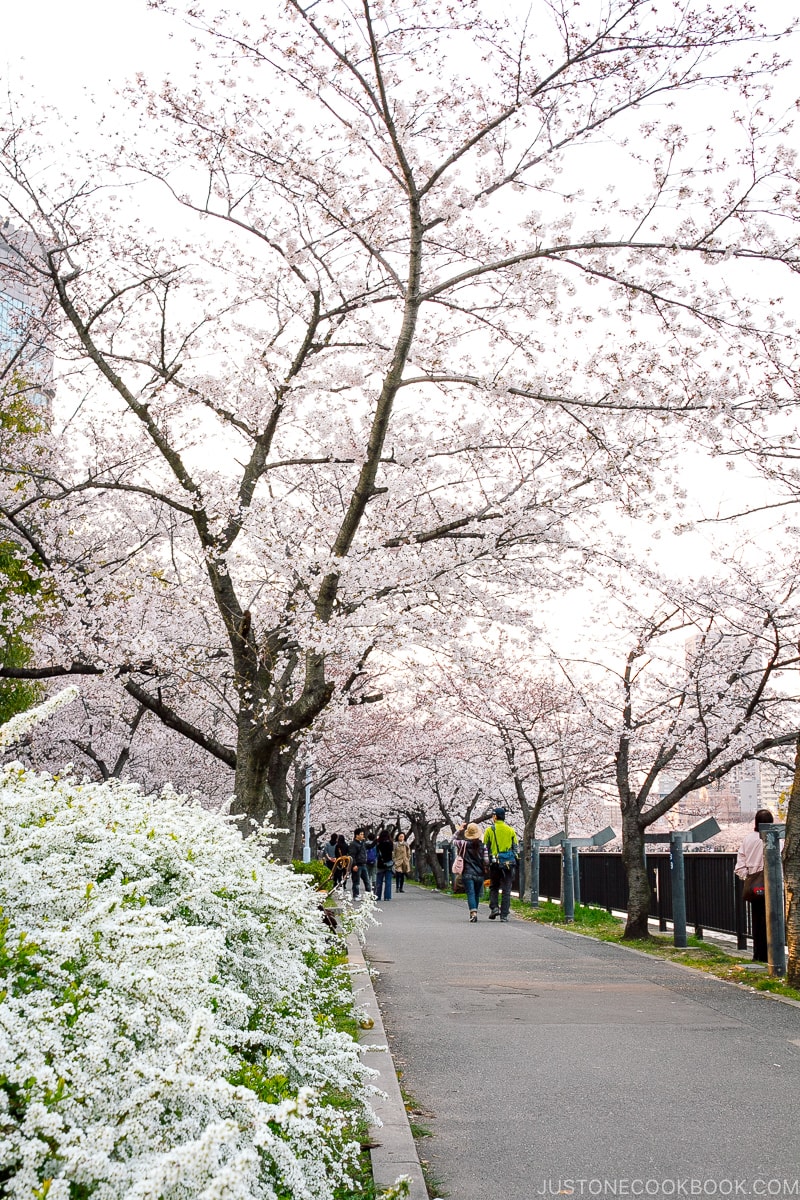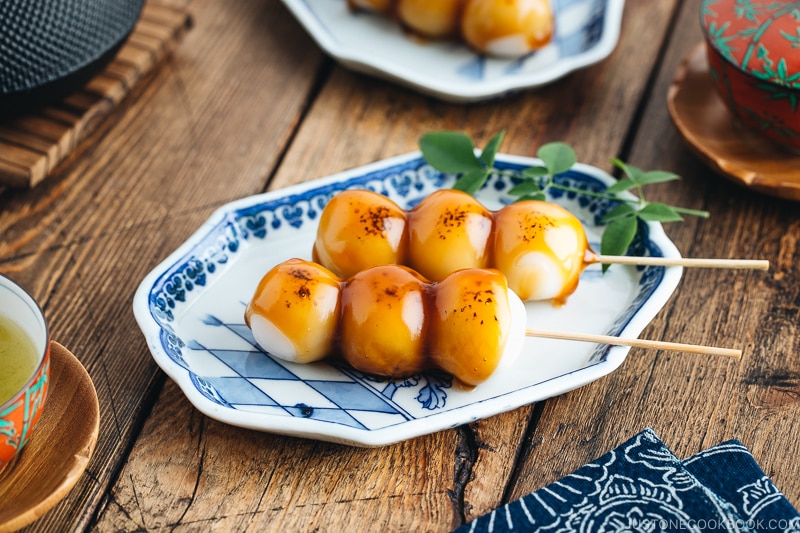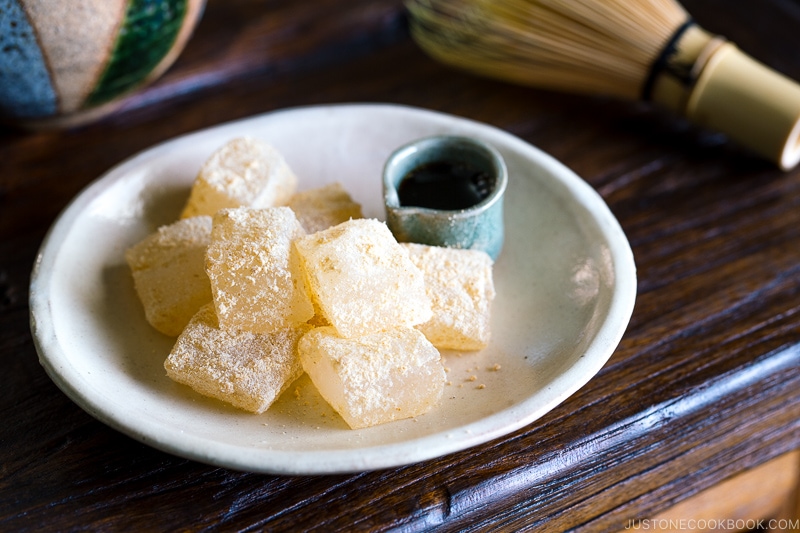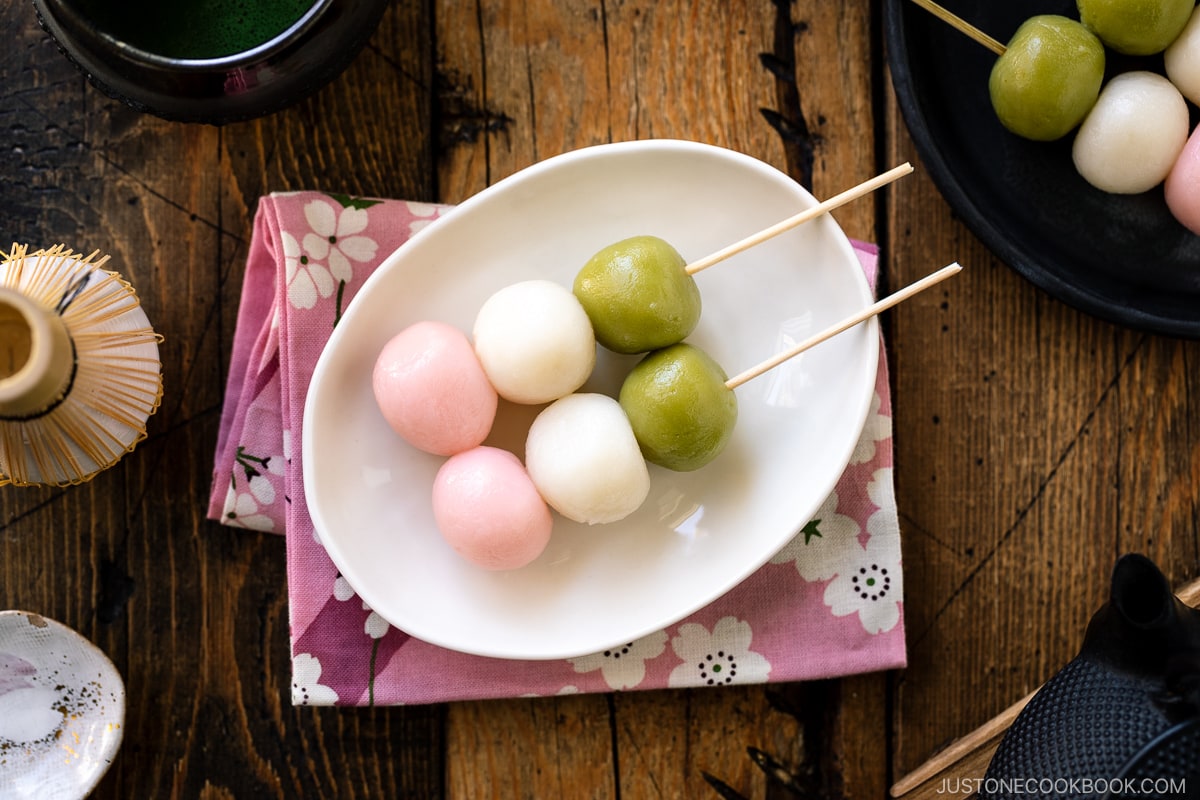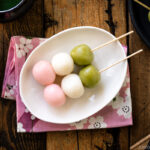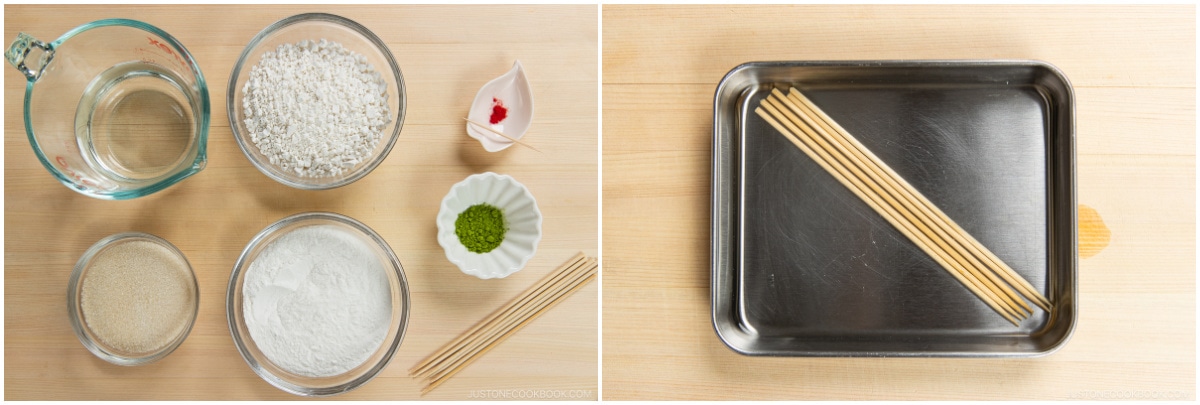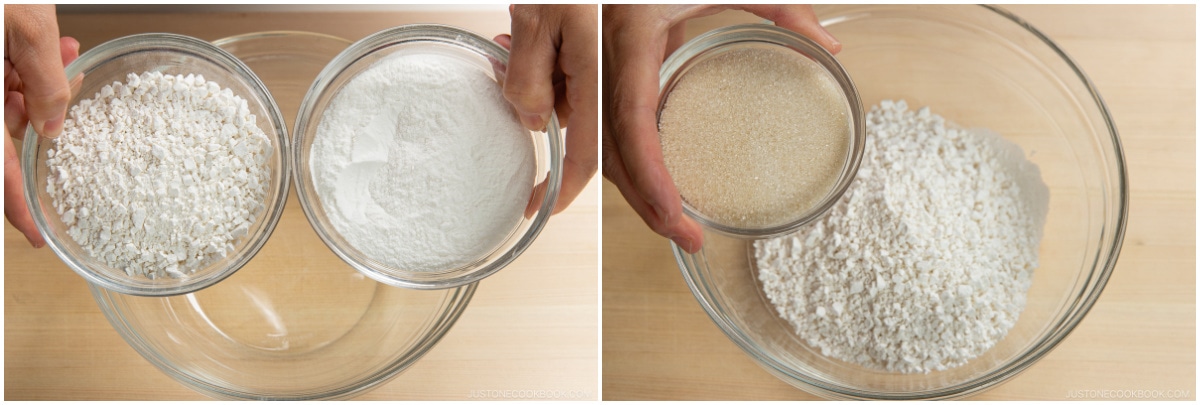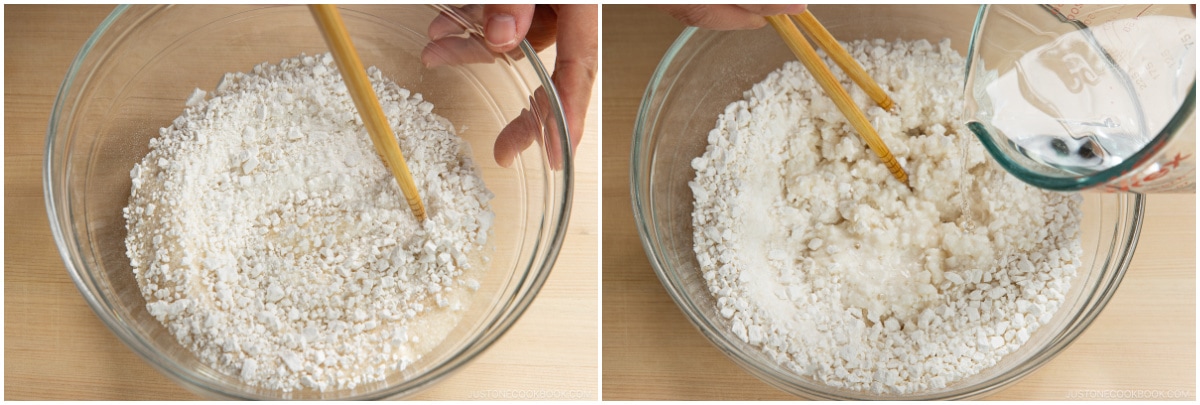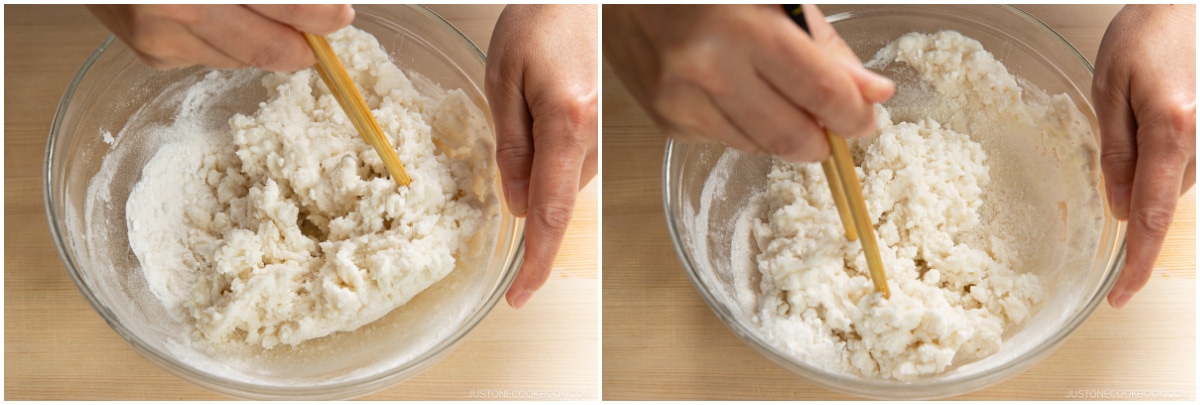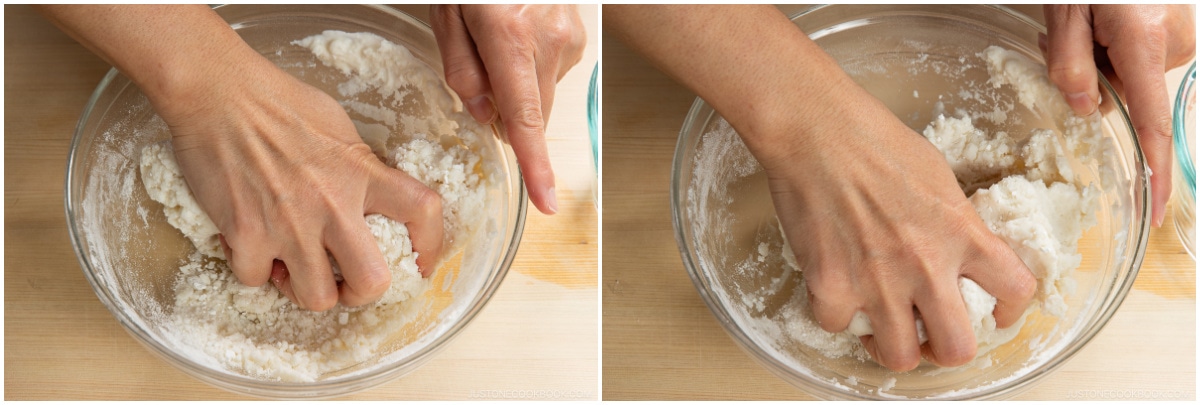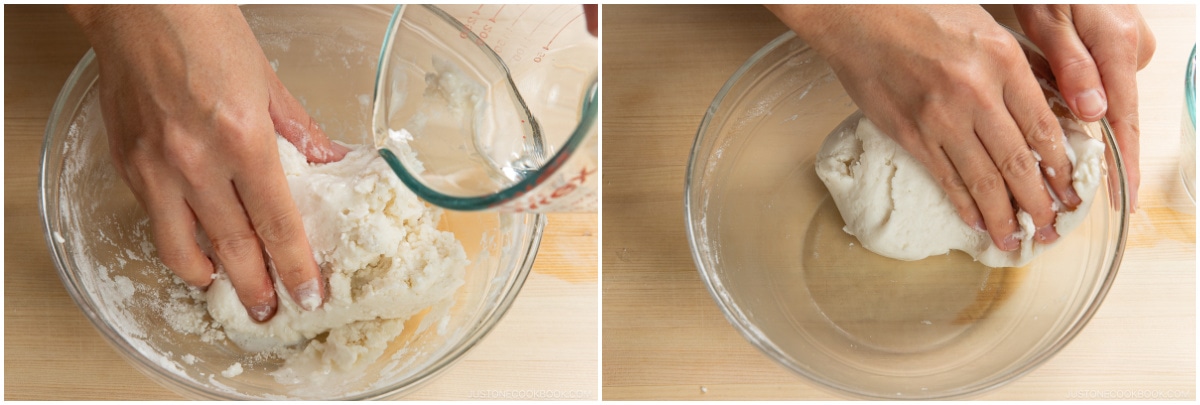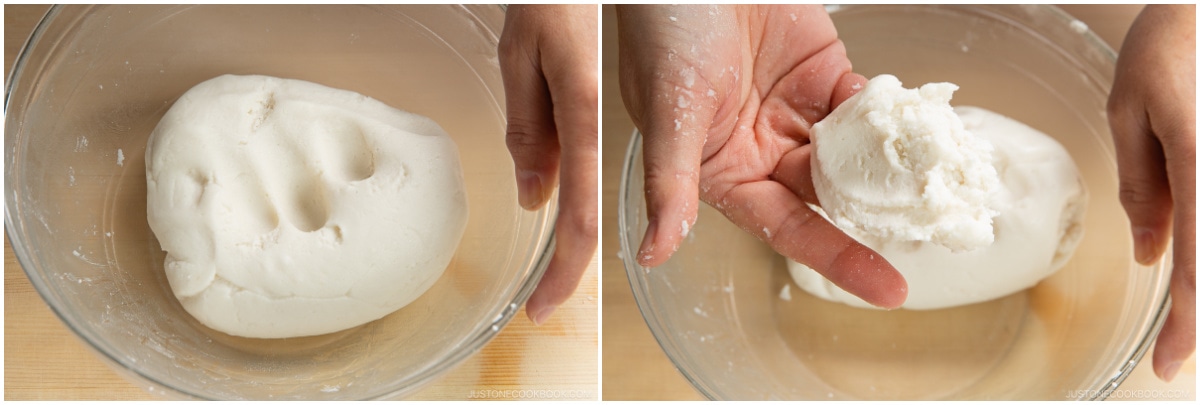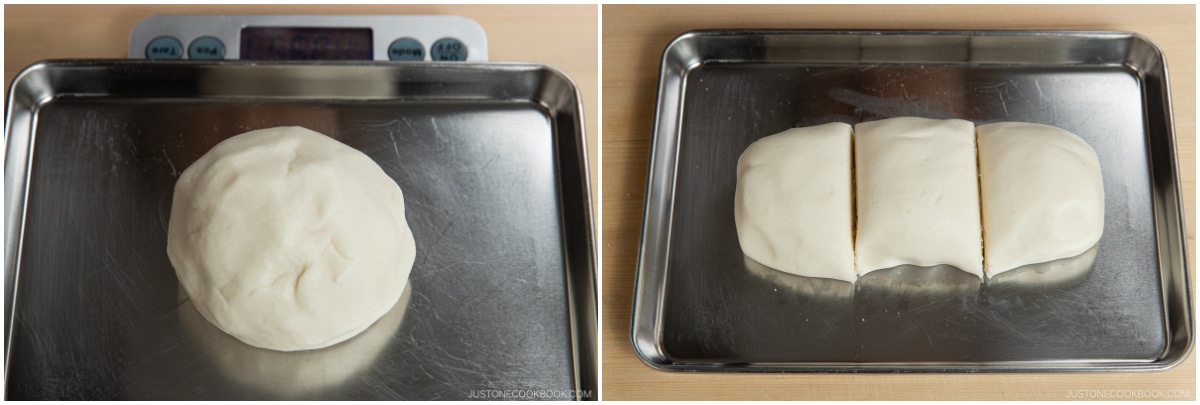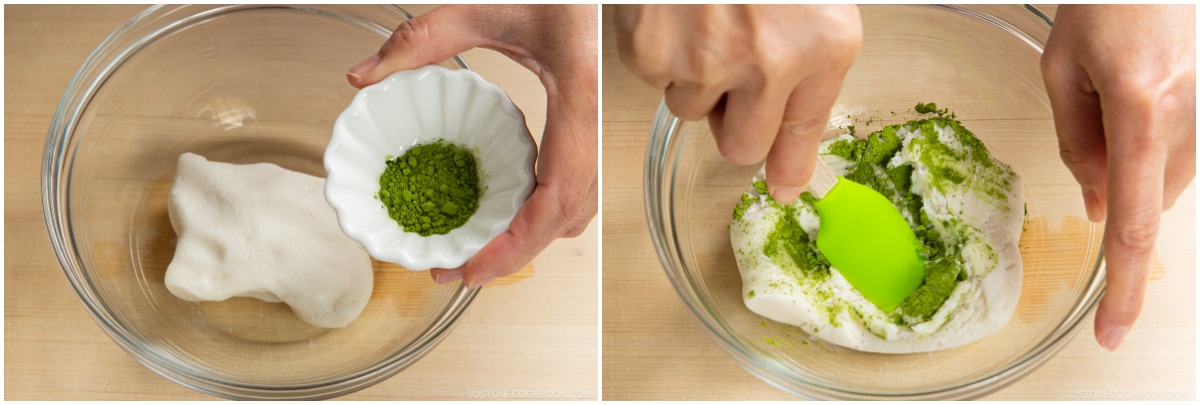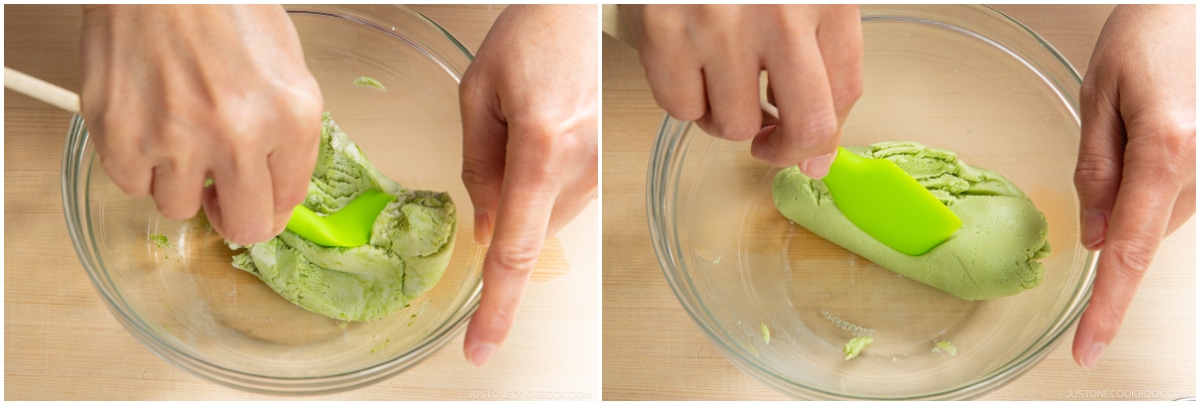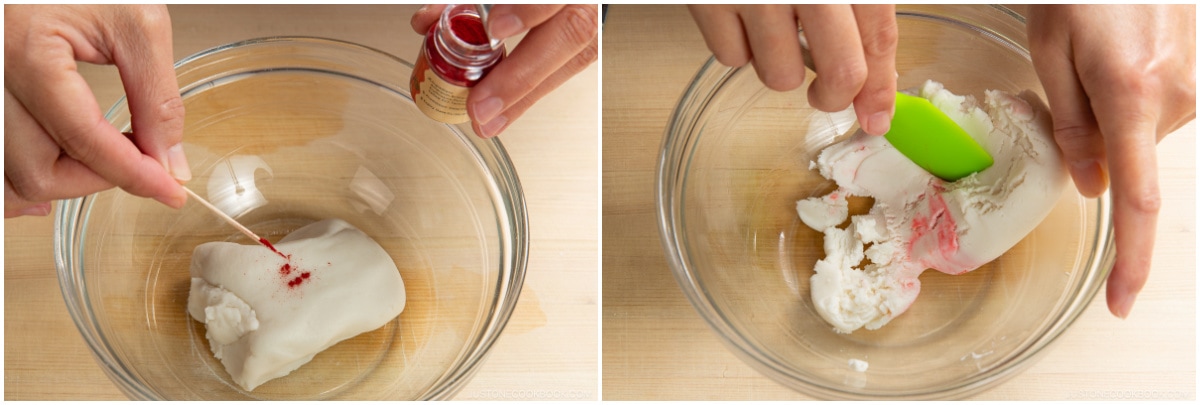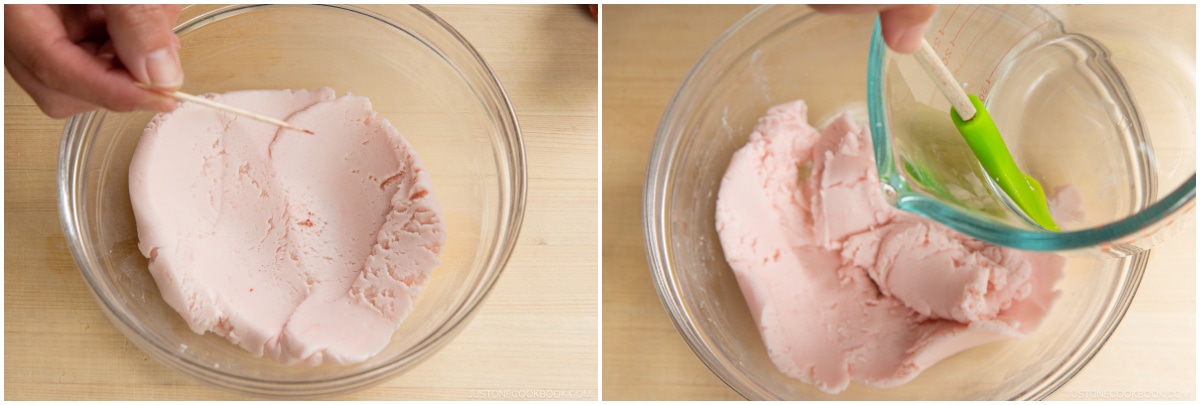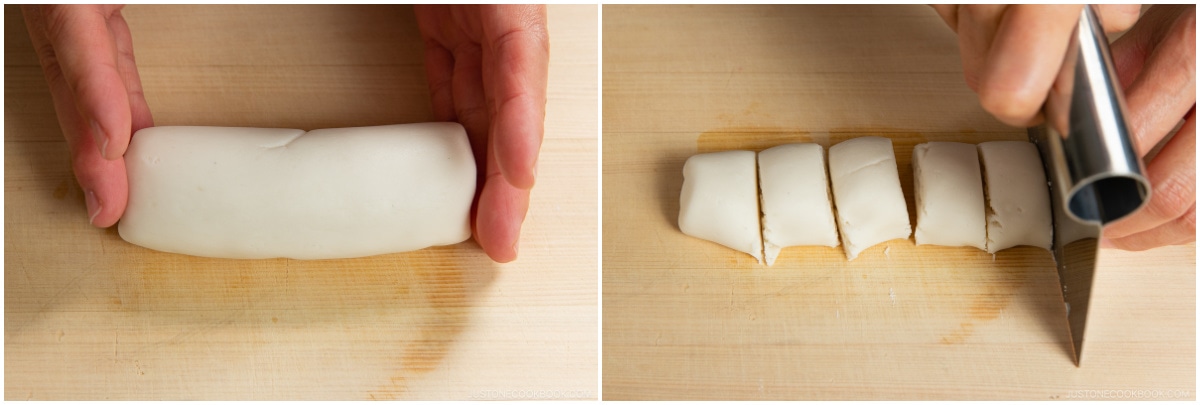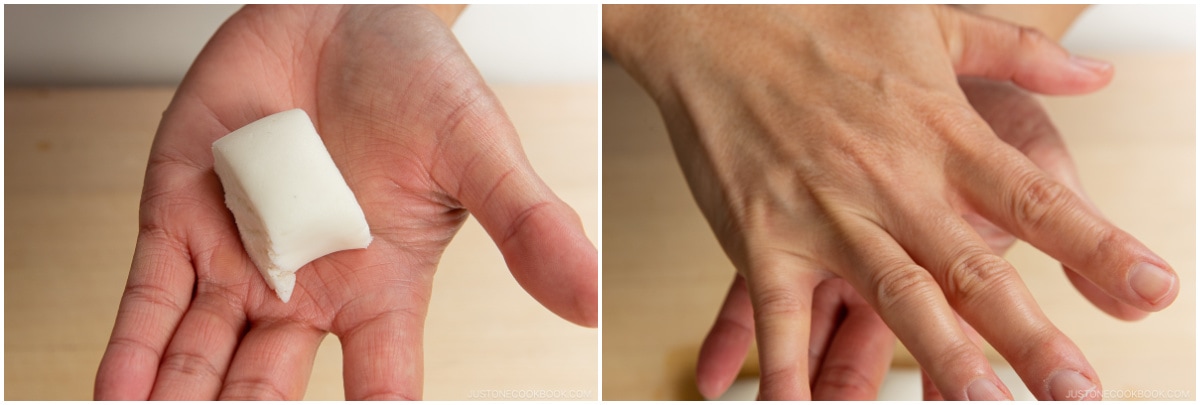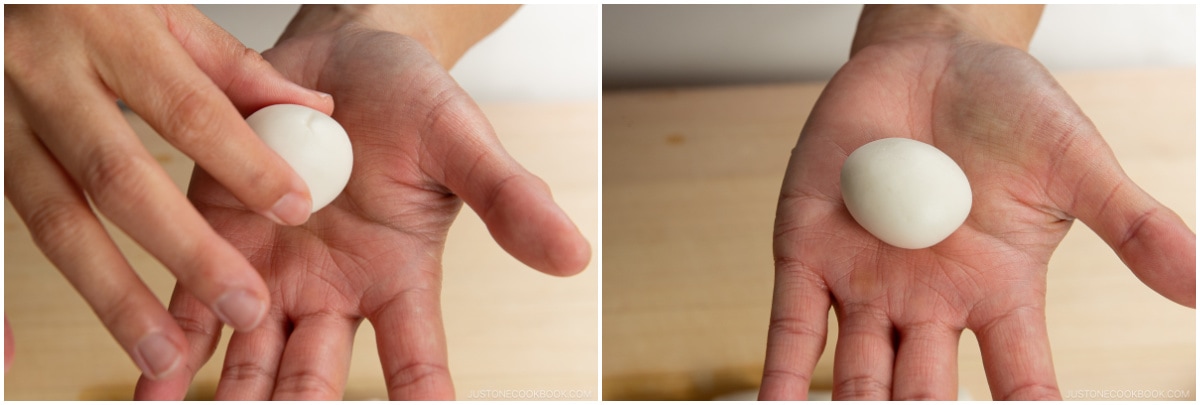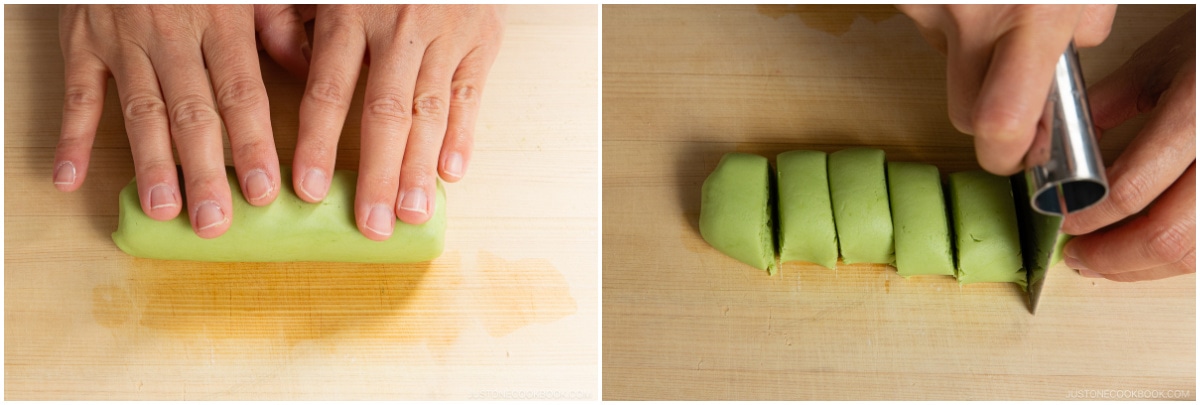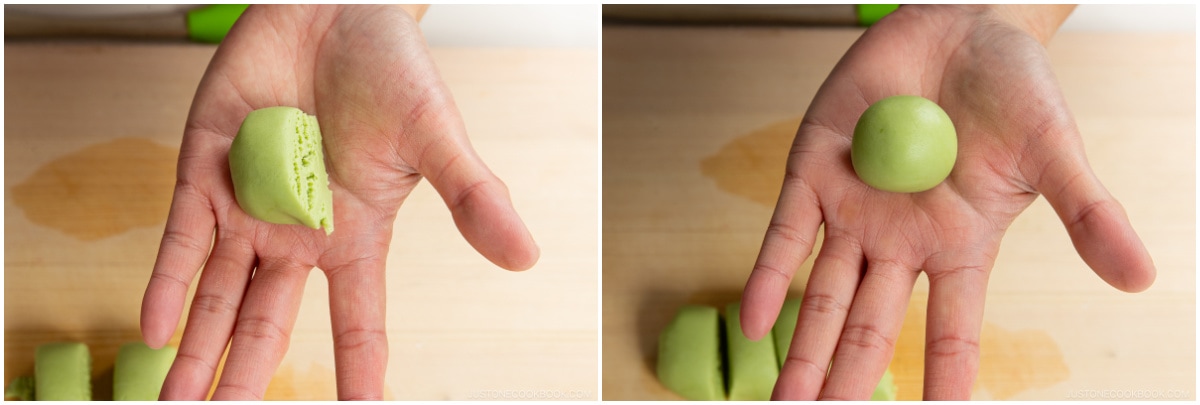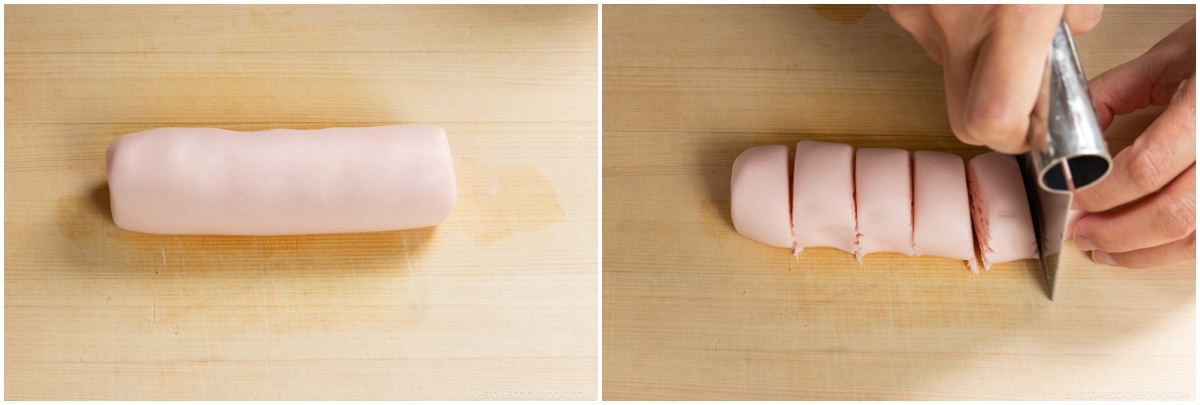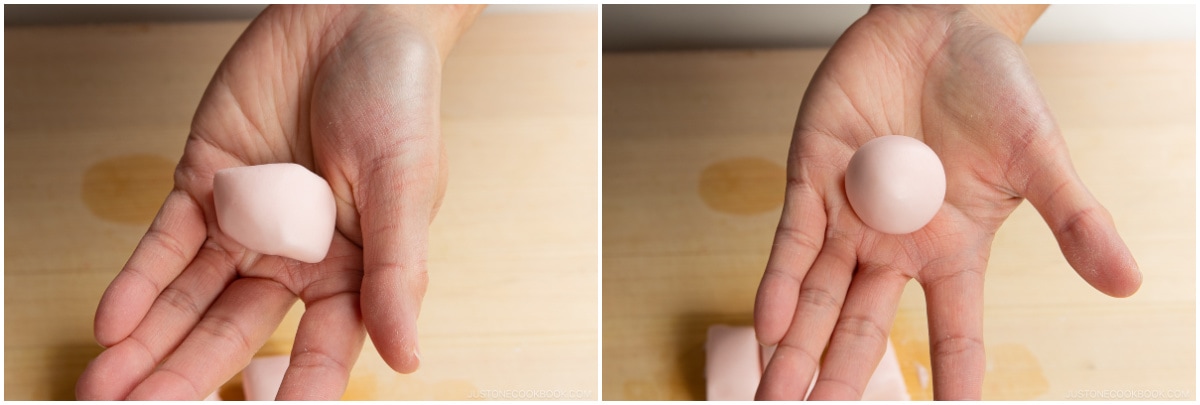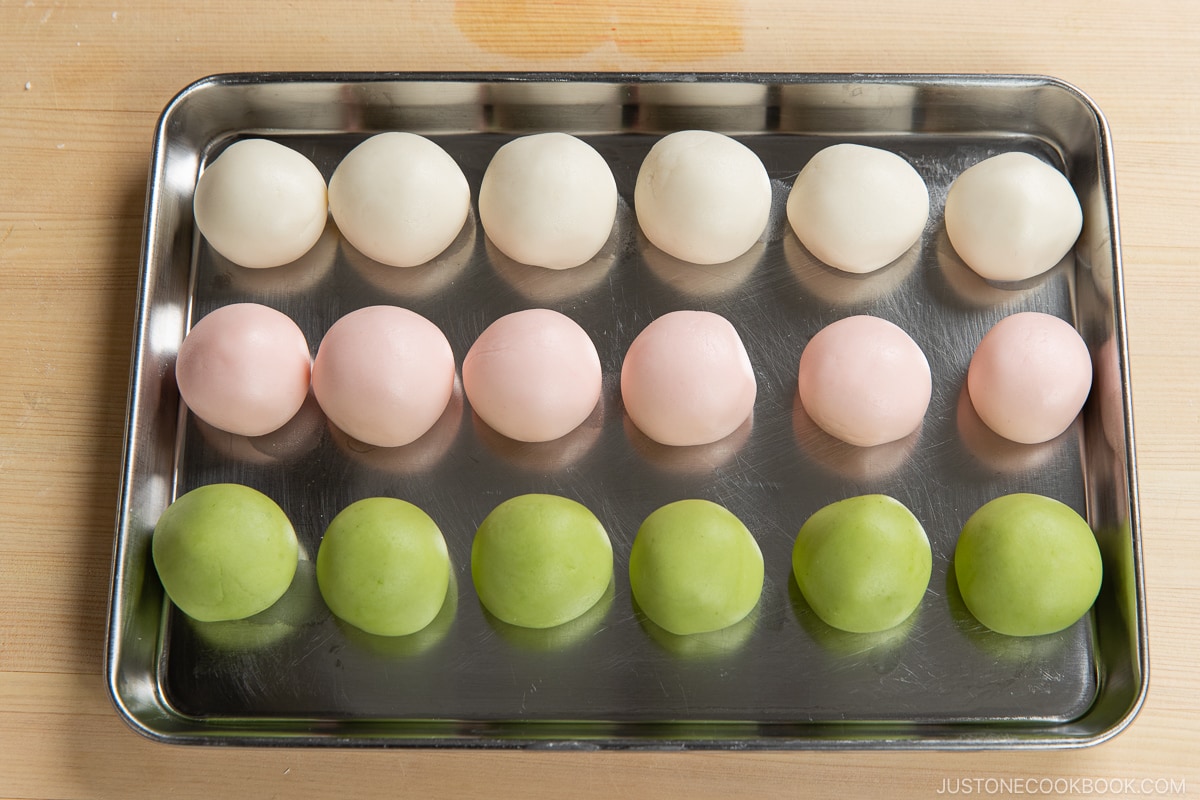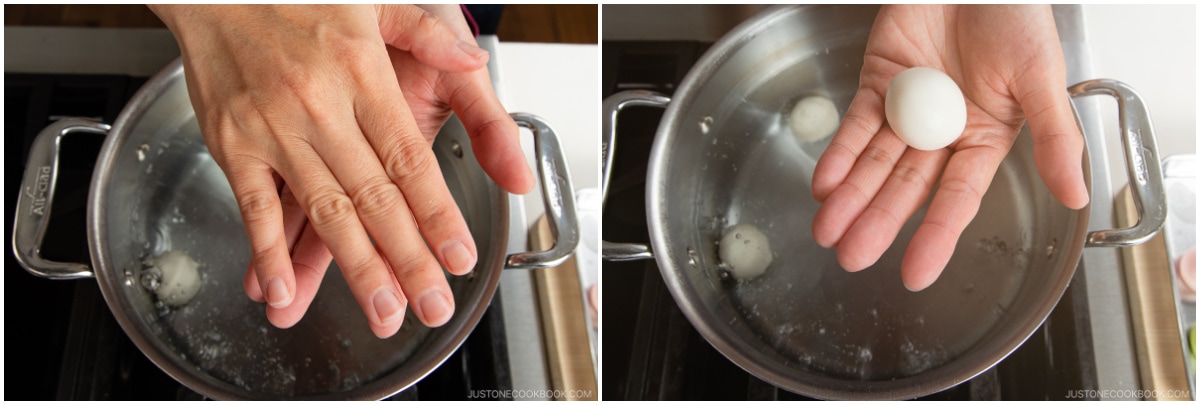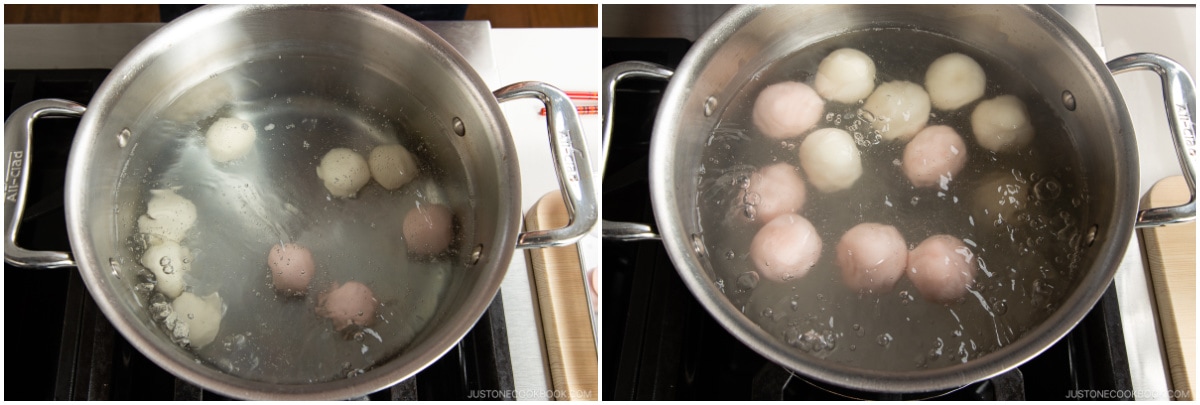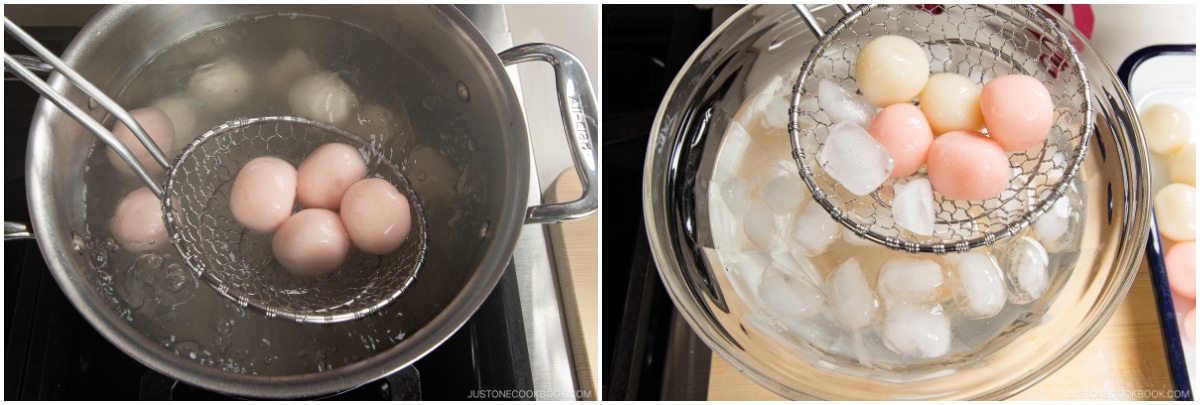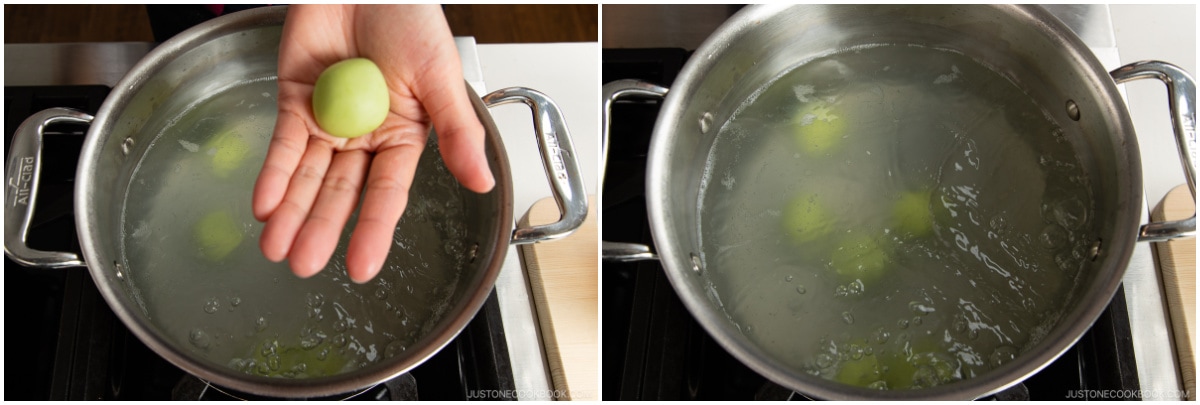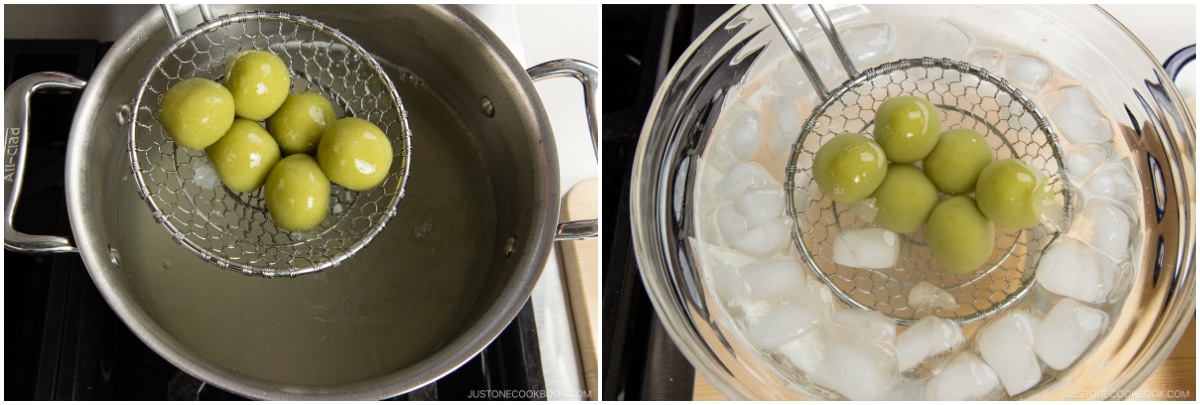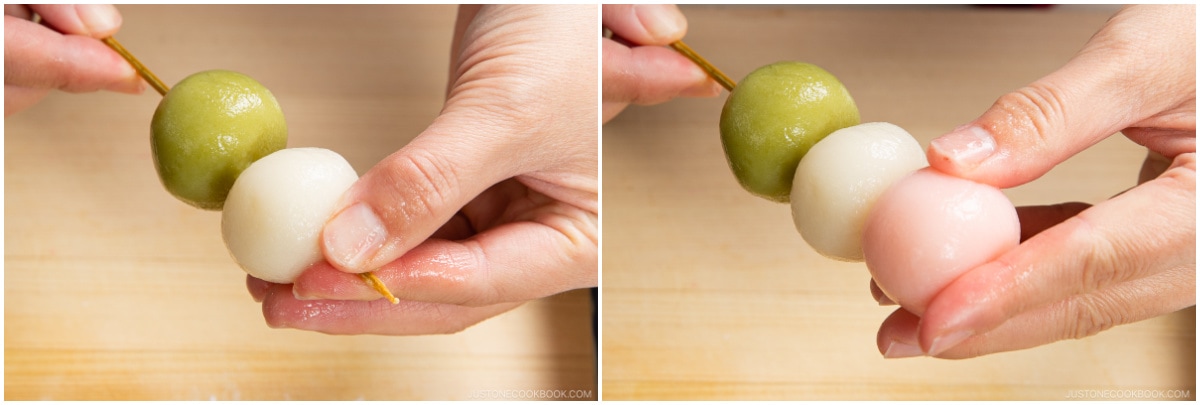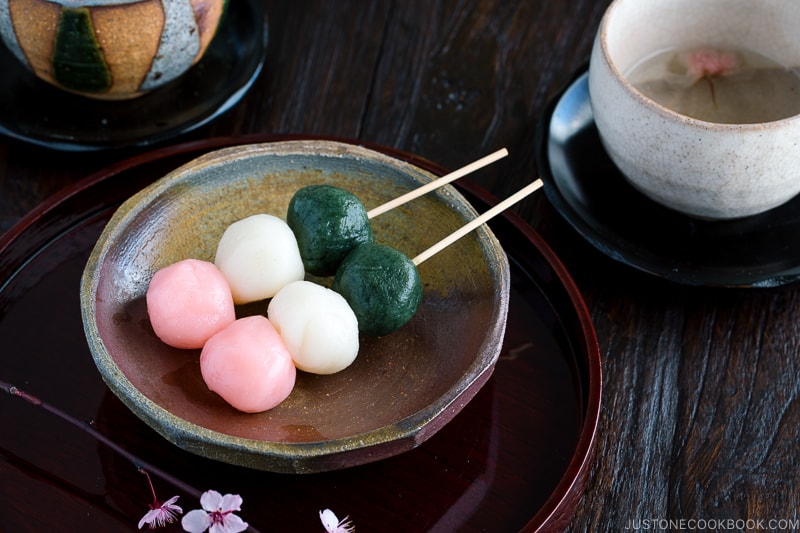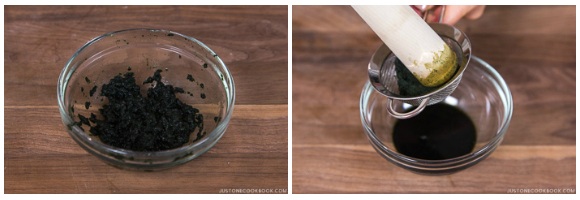As spring approaches, Japan turns into a shade of pink. It is a time of renewal of life and beauty, and we celebrate this turn of the season with cherry blossom viewing (or Hanami in Japanese). A tradition that dates back as early as the 8th century. During the cherry blossom viewing, the Japanese also enjoy different types of wagashi (traditional confectionery) including Hanami Dango (花見団子).
What is Hanami Dango?
Dango (団子) is a Japanese skewered sweet dumpling made with rice flour and glutinous rice flour. Hanami (花見) means flower viewing (of cherry blossom), and during this season, many people go out for strolls through the magnificent columns of the flowering trees. The Japanese have long celebrated and admired the beauty of cherry blossoms by having picnics beneath the blooms. At the picnics, we enjoy spring-themed foods in bento and wagashi which often incorporate seasonal flavors. One of the popular sweets you can find at pop-up food stalls during the cherry blossom season is hanami dango (花見団子). The dumplings come in pink, white, and green springtime hues, so they are also called sanshoku dango (三色団子).
Why Pink, White, and Green Colors?
There are a few theories on why the hanami dango is skewered in a particular order of pink, white, and green from the top. Here are two popular theories:
The life cycle of cherry blossoms: Pink buds, white flowers, and then green leaves. The scenery of the spring arrival: Red sun or pink cherry blossoms, leftover snow, and yomogi (mugwort) or green sprouts beneath the snow.
Which theory do you think is correct? They both sound good to me as the hanami dango brings happiness in the spring season.
History of Hanami Dango
The history of hanami dango overlaps with the history of cherry blossom viewing. The ritual started to emerge when Toyotomi Hideyoshi served his guests hanami dango as a tea confectionery at the cherry blossom viewing party called Daigo no Hanami, which was held at Daigoji Temple in Kyoto on March 15, 1833. Until then, cherry blossom viewing was not a party where people enjoyed food and drink, but more like an aristocratic pastime composing songs and enjoying dances and music. From this point on, the custom of eating and drinking while admiring the blossoms became widespread among the common people, and hanami dango came to be an indispensable Japanese confectionery for cherry blossom viewing.
Ingredients for Hanami Dango
I will talk about the types of rice flour in the section below, but here are the ingredients you’ll need to make the authentic hanami dango.
Joshinko (上新粉) – Japanese short-grain rice flour Shiratamako (白玉粉) – Japanese short-grain glutinous rice flour, also known as sweet rice flour Sugar – I use granulated sugar Red food coloring – I use powder kind, but you can use gel Matcha (green tea powder) or yomogi (mugwort)
How to Make Hamami Dango
Find the recipe card below for detailed instructions.
Learn Different Types of Rice Flour
If you never made dango or mochi desserts, you might not be familiar with the different types of rice flour used in Japanese desserts. In this section, let’s talk about four different types of Japanese short-grain rice flour and glutinous rice flour.
Joshinko and Shiratamako
Dango (だんご, 団子) is traditionally made with joshinko (上新粉) or short-grain rice flour, which is made of uruchimai (うるち米). This is why dango and mochi are different as mochi is made with glutinous rice or glutinous rice flour, which is made of mochigome (もち米). I find dango made only with joshinko a bit too chewy and tough. So when I make dango at home, I always mix both rice flour and glutinous rice flour to achieve the perfect texture for the dango. My recommendation is an equal proportion: 50% rice flour and 50% glutinous rice flour. The combination will give you a bouncy, chewy texture, but it won’t be too sticky like mochi. You can do 40% rice flour and 60% glutinous rice flour if you prefer a softer, mochi-like texture.
Mochiko
Although shiratamako and mochiko are both “glutinous rice flour” (also called “sweet rice flour”), the results are slightly different, especially in texture and flavor. Shiratamako yields a smooth, more refined, and chewy/bouncy texture while mochiko yields a soft, elastic texture and a bit bland taste. Most Japanese recipes use shiratamako over mochiko for a superior texture and flavor.
Dangoko (Dango Flour)
At the Japanese grocery store, you may find another type of flour called dangoko (団子粉). This is a combination of rice flour and glutinous rice flour, but the ratio is unknown (up to the manufacturer). If you have trouble finding both joshinko and shiratamako to make your own 50/50 blend (like I showed in my recipe), buying a package of dangoko is a great alternative. However, in my opinion, the texture of the dango is firmer. This is probably because the blend uses more rice flour than glutinous rice flour instead of 50/50.
Use These Bamboo Skewers for Dumplings
You will need 6-inch (15 cm) bamboo skewers. If you already have longer skewers at home, you can trim them down to 6-inch pieces. There are two types: round skewers and square skewers with a paddle. I use round skewers for this recipe.
How to Color the Dumplings in Pink and Green
The Pink Dumplings
Traditionally the pink dumplings were colored using purple shiso (赤紫蘇), salt-pickled cherry blossoms, or fruit of cape jasmine (kuchinashi クチナシ). These natural food coloring options can be harder to access outside of Japan. If you prefer natural food coloring, I recommend using beet juice or ground freeze-dried strawberry/raspberry to dye the dumplings pink.
The Green Dumplings
How to Enjoy Hanami Dango
Hanami dango is enjoyed by itself without any toppings or sauce. If you have never tried this Japanese traditional sweet, you may find it a bit bland. If you like, enjoy these dumplings with anko (sweet red bean paste). Have you heard of the Japanese expression or proverb “Hana yori dango” (花より団子)? It means “dumplings over flowers” and is used to describe someone who values practicality and substance over-refinement and appearance. Are you the person who comes to see cherry blossoms and is more interested in eating hanami dango than in admiring flowers? I am!
Other Delicious Japanese Sweets
Mitarashi Dango Warabi Mochi Tsukimi Dango Sakura Mochi
Wish to learn more about Japanese cooking? Sign up for our free newsletter to receive cooking tips & recipe updates! And stay in touch with me on Facebook, Pinterest, YouTube, and Instagram. Editor’s Note: This post was originally published on March 21, 2017. It was updated with the revised recipe and new images on March 12, 2023. It was republished with more helpful content on March 19, 2024.
